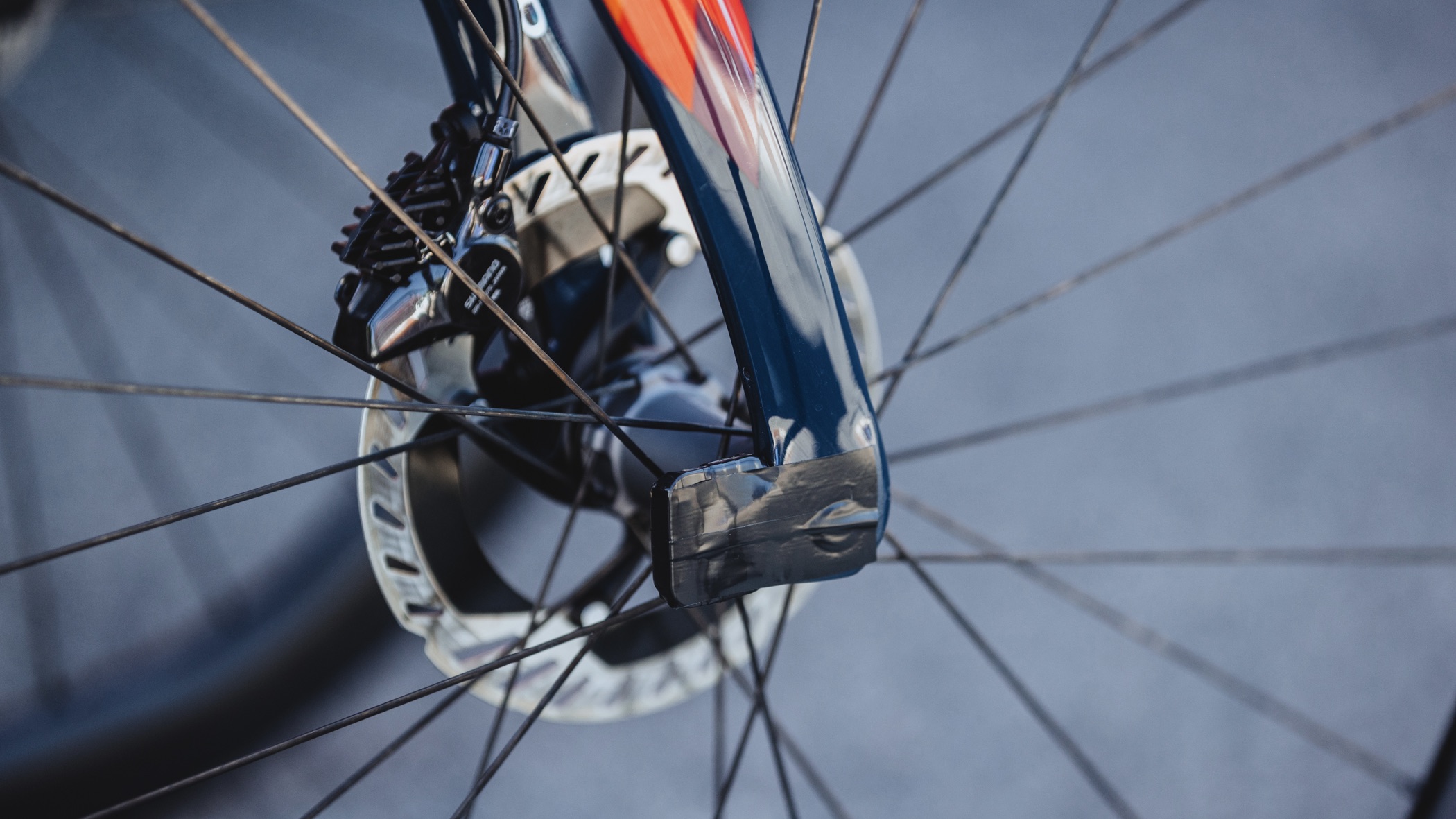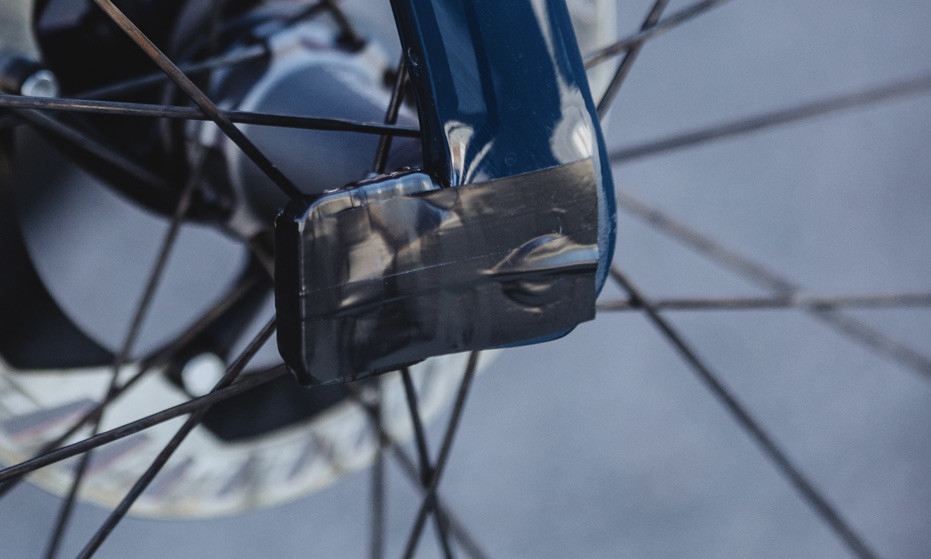Duct tape aero transponder hack spotted on Ineos bikes at Vuelta a España
All-tape aero-bodge sits next to £1,000 hubs

The pro peloton is in many respects a rolling bicycle showroom, and a high end one at that. A perspiring, chaotic Mayfair Lamborghini dealership fuelled by carbohydrates rather than caviar. More often than not the pro's bikes, as well as being ultra-desirable in themselves, also feature some ultra-premium, super-limited accessories. Ineos Grenadiers, formerly Team Sky, pioneered the idea of marginal gains, and have been at the vanguard of niche accessories for years. Lately, we've seen them using bespoke 3D-printed titanium computer mounts at the Tour de France, but that doesn't mean all of their innovations are polished and expensive.
At the Vuelta a España we've spotted the Ineos team mechanics bodging the race timing transponders at the very bottom of the fork with black duct tape. The juxtaposition of this clearly homemade solution directly next to a £1,000 Tactic hub on a Princeton Carbonworks Alta wheel is nothing short of jarring.

Why the bodge then? So often we see mechanics affixing the transponders – simply a small box containing a timing chip unique to each rider to time them across the finish line of each stage or race – to the fork leg, somewhere around the midpoint, either using heat shrink tape or a section of butyl or latex inner tube. Undoubtedly, given the team's marginal gains reputation, the reason will be some aerodynamic benefit, despite the rough and ready appearance.
Bicycles are tested thoroughly in the wind tunnel for aerodynamic efficiency. The new BMC prototype bike we spotted at the Critérium du Dauphiné showcases how wild bicycle design can be when led by aerodynamics, and Filippo Ganna's hour record bike shows how much a team like Ineos can dive headfirst into the minutiae of tiny gains in search of victory. What doesn't happen (at least commonly) is the testing of bikes with transponders mounted to them, despite the fact that this is the more realistic race scenario. What we suspect is that Ineos, not content with the 'all in this together' mentality have done some testing and deduced that mounting the transponder at the hub is objectively a better solution, despite the scruffy appearance.
We've seen Jumbo-Visma mount the transponder on the inside of the fork leg before, presumably where the airflow is already silghtly more turbulent, but this placement is new. Luckily the forks of the team's £12,000 Pinarello Dogma F bikes feature small aero tabs at the base of the fork legs, dubbed a 'fork flap' by Pinarello. This has given the mechanics an extra place to add some tape, securing the transponder on the vertical plane as well as the horizontal one.
Cyclingnews has reached out to the team for clarity, but we're yet to receive a reply, so we're still in the dark as to whether this is indeed an aero hack, and if so, how many watts it might be worth. Regardless, if you thought every stone had been turned in the pursuit of speed, think again.
Get The Leadout Newsletter
The latest race content, interviews, features, reviews and expert buying guides, direct to your inbox!

Will joined the Cyclingnews team as a reviews writer in 2022, having previously written for Cyclist, BikeRadar and Advntr. He’s tried his hand at most cycling disciplines, from the standard mix of road, gravel, and mountain bike, to the more unusual like bike polo and tracklocross. He’s made his own bike frames, covered tech news from the biggest races on the planet, and published countless premium galleries thanks to his excellent photographic eye. Also, given he doesn’t ever ride indoors he’s become a real expert on foul-weather riding gear. His collection of bikes is a real smorgasbord, with everything from vintage-style steel tourers through to superlight flat bar hill climb machines.